Versions Compared
Key
- This line was added.
- This line was removed.
- Formatting was changed.
7 Sneaky Cognitive Biases that Wreak Havoc on Innovation
10 min read
 Image Modified
Image Modified
Introduction
Have you ever wondered why even the most brilliant projects sometimes go completely off track? The culprit might just be lurking in our own minds—cognitive biases. These sneaky mental shortcuts can wreak havoc on our ability to think objectively and sabotage collaboration. Inspired by the captivating book "The Art of Thinking Clearly," I couldn't resist exploring how biases disrupt the world of innovation - especially when it comes to working together to bring new ideas to life. So, buckle up and join me on a journey to unravel 7 lesser-known cognitive biases that can turn your collaboration into a wild ride. But fret not! Along the way, I'll equip you with clever strategies to navigate through these biases and steer your team towards success.
1. The IKEA Effect: When You Built It, You Believe It Must Be Good
 Image Modified
Image Modified
Overview:
Imagine pouring your heart, soul, and Allen wrenches into a project, becoming its number one defender. That's the IKEA effect in action! This sneaky bias tricks us into overvaluing our creations just because we invested so much time and effort into building them.
Impact:
In collaboration, the IKEA effect can be a stumbling block. It makes us cling onto our ideas too tightly, blinding us to their flaws and alternative viewpoints. This bias can hinder progress and prevent us from making necessary improvements.
Prevention:
Don't worry, we've got the tools to tackle this bias! To beat the IKEA effect, create a culture of constructive critique. Encourage honest feedback, foster open discussions, and invite external perspectives. By seeking different viewpoints and being open to improvement, you'll ensure your collaborative creations are top-notch. Consider hosting a critique workshop in partnership with our team to overcome barriers.
2. The Curse of Knowledge: When Expertise Hinders Effective Communication
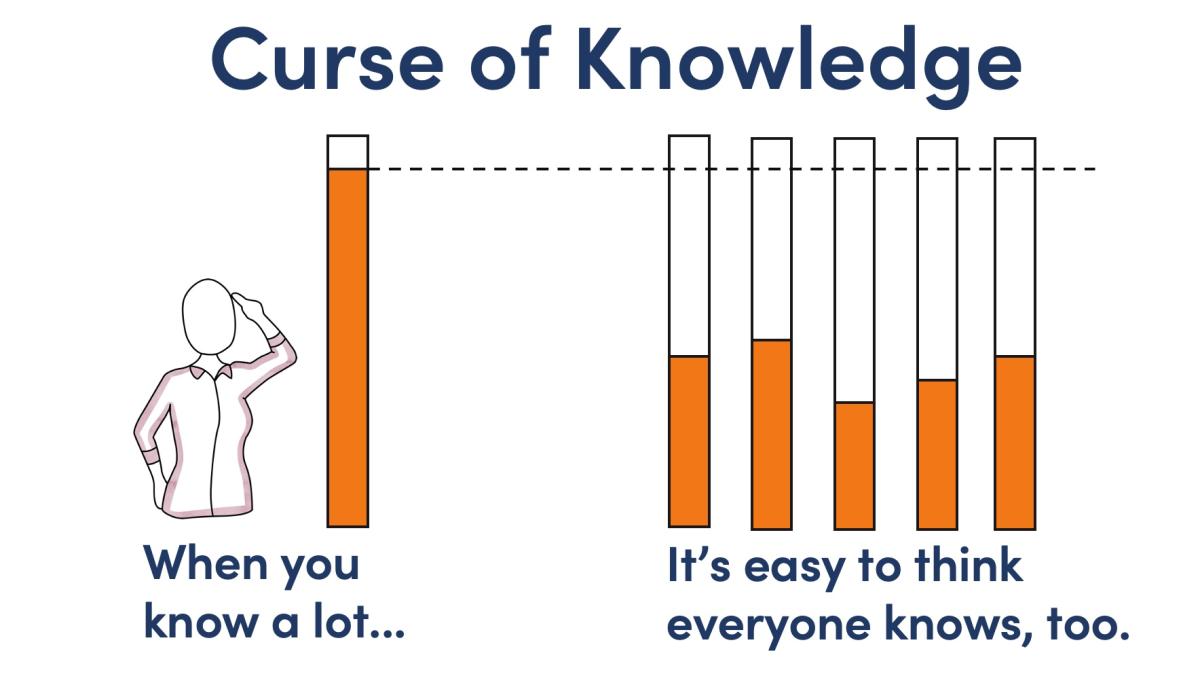 Image Modified
Image Modified
Overview:
Have you ever explained a mind-boggling concept to your team, but all you see are puzzled expressions. Uh-oh, you might be cursed with knowledge! This tricky bias makes it hard for us to remember what it's like not to know something we're already familiar with.
Impact:
In collaboration, the curse of knowledge can turn communication into a jumbled mess. It's like speaking a different language that only you understand. Your team might feel left in the dark, hindering their ability to contribute effectively and slowing down progress.
Prevention:
Do not despair, communication superheroes! To banish this curse, embrace the power of clear and concise communication. Seek diverse perspectives to uncover blind spots, encourage knowledge sharing within the team, and bring in visual aids, analogies, or even a captivating story. By bridging the gap in understanding, you'll ensure smooth collaboration and save the day!
3. The Spotlight Effect: When We Feel Like Everyone is Watching
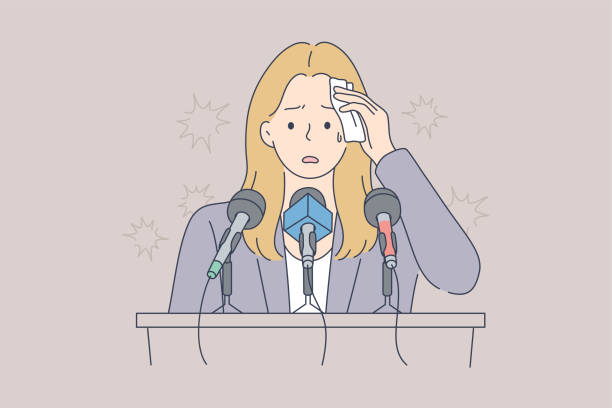 Image Modified
Image Modified
Overview:
Imagine feeling like all eyes are on you, judging your every move in a meeting. Cue the spotlight effect! This bias makes us think that everyone notices and cares way more about our performance than they actually do.
Impact:
In collaborative settings, the spotlight effect can turn us into nervous wrecks, afraid to speak up or share our ideas. It's like having a mini audience of critics in our heads, holding us back from contributing our best. Collaboration suffers when we're too self-conscious to let our creativity flow freely.
Prevention:
But fear not, brave collaborator! Dim that spotlight and let your brilliance shine. Create a safe and supportive collaboration space where everyone feels comfortable being themselves. Embrace open dialogue and celebrate mistakes as opportunities for growth. Remember, we're all human, and nobody expects perfection. Foster a culture where ideas are welcomed with open arms, questions are encouraged, and judgment takes a back seat.
4. The Backfire Effect: When Beliefs Get Sticky
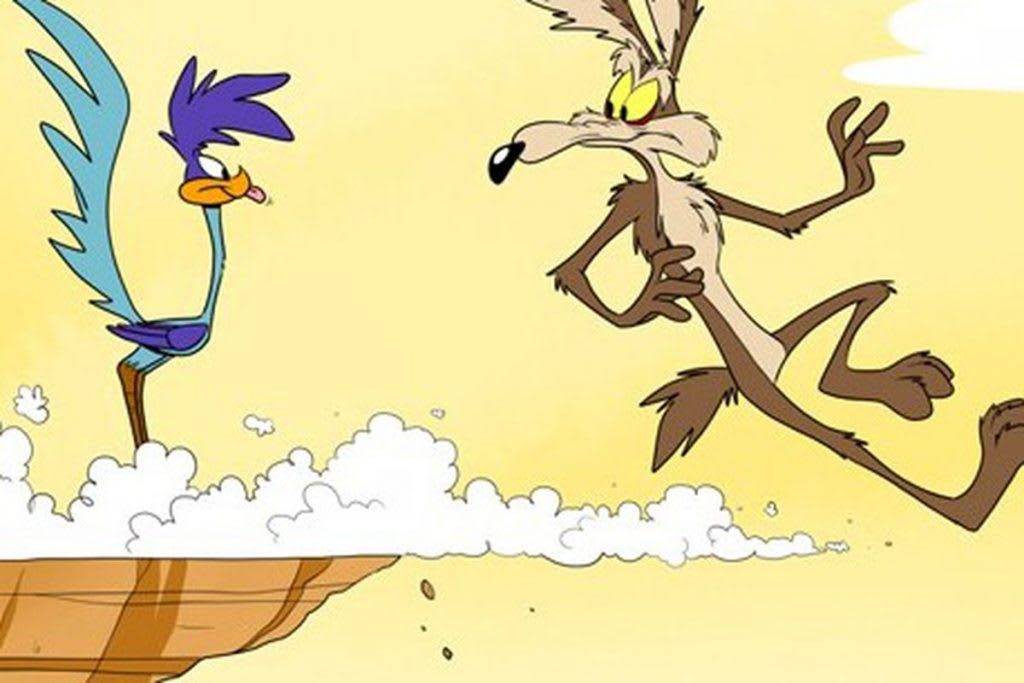
Overview:
Have you ever presented solid evidence that contradicts someone's beliefs, and instead of changing their minds, they dig their heels in even deeper! That's the backfire effect in action. It's like a force field that makes people cling stubbornly to their beliefs when faced with opposing evidence.
Impact:
When the backfire effect takes the stage, projects suffers. It creates a divide among team members, polarizing their beliefs and hindering constructive discussions. Instead of engaging in a productive exchange of ideas, people become defensive and resistant to alternative perspectives. This can lead to a stalemate, with no room for growth or innovation. It's like being trapped in a belief bubble, unable to break free and embrace new possibilities.
Prevention:
To defeat the backfire effect and foster a collaborative environment where ideas can flow freely, we need to embrace a few superhero strategies. First, let's focus on evidence-based discussions rather than personal opinions. When presenting conflicting information, approach it with curiosity and a willingness to learn. Encourage critical thinking and constructive debates, where everyone's input is valued. By creating an atmosphere of open-mindedness, we can burst the belief bubbles and pave the way for productive collaboration.
Remember, we're all on this collaborative journey together, and by taming the Backfire Effect, we can create a dynamic space where ideas can flourish and innovation can thrive!
5. The Mere Exposure Effect: When Familiarity Breeds Comfort
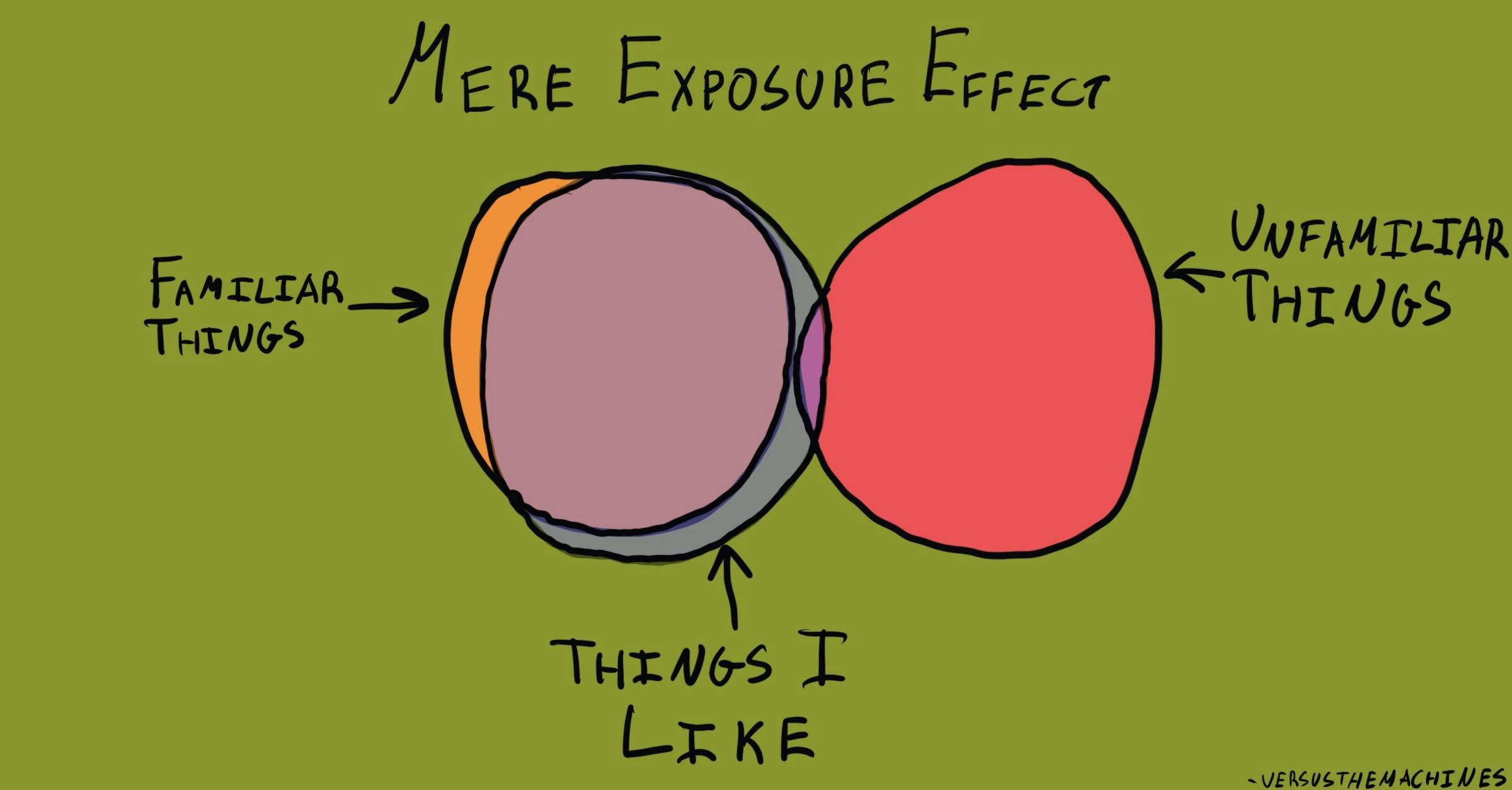 Image Modified
Image Modified
Image via the Decision Lab
Overview:
The Mere Exposure Effect
is a fascinating bias that tells us our preferences can be swayed simply by repeated encounters with something, even if there's not much substance to it. But fear not, brave innovators! We have the power to break free from this effect and embrace true progress.
Impact:
In
government innovation, the Mere Exposure Effect can be a saboteur. It tricks us into clinging to outdated practices and familiar ideas, preventing us from exploring new territories. Collaboration suffers as teams fall into the comfort of the known, stifling fresh thinking and growth. It's like being stuck in a time loop, where innovation becomes a mere illusion.
Prevention:
To vanquish the Mere Exposure Effect and ignite a flame of innovation, we must embrace a few strategies. First, foster a culture of critical inquiry and openness to new ideas. Encourage diverse perspectives and invite voices from different backgrounds to challenge the status quo. Break free from the clutches of the familiar. Remember, true innovation lies in the
unknown, not in the cozy corners of the familiar.
6. The Halo Effect:When a Single Trait Can Cloud Judgement
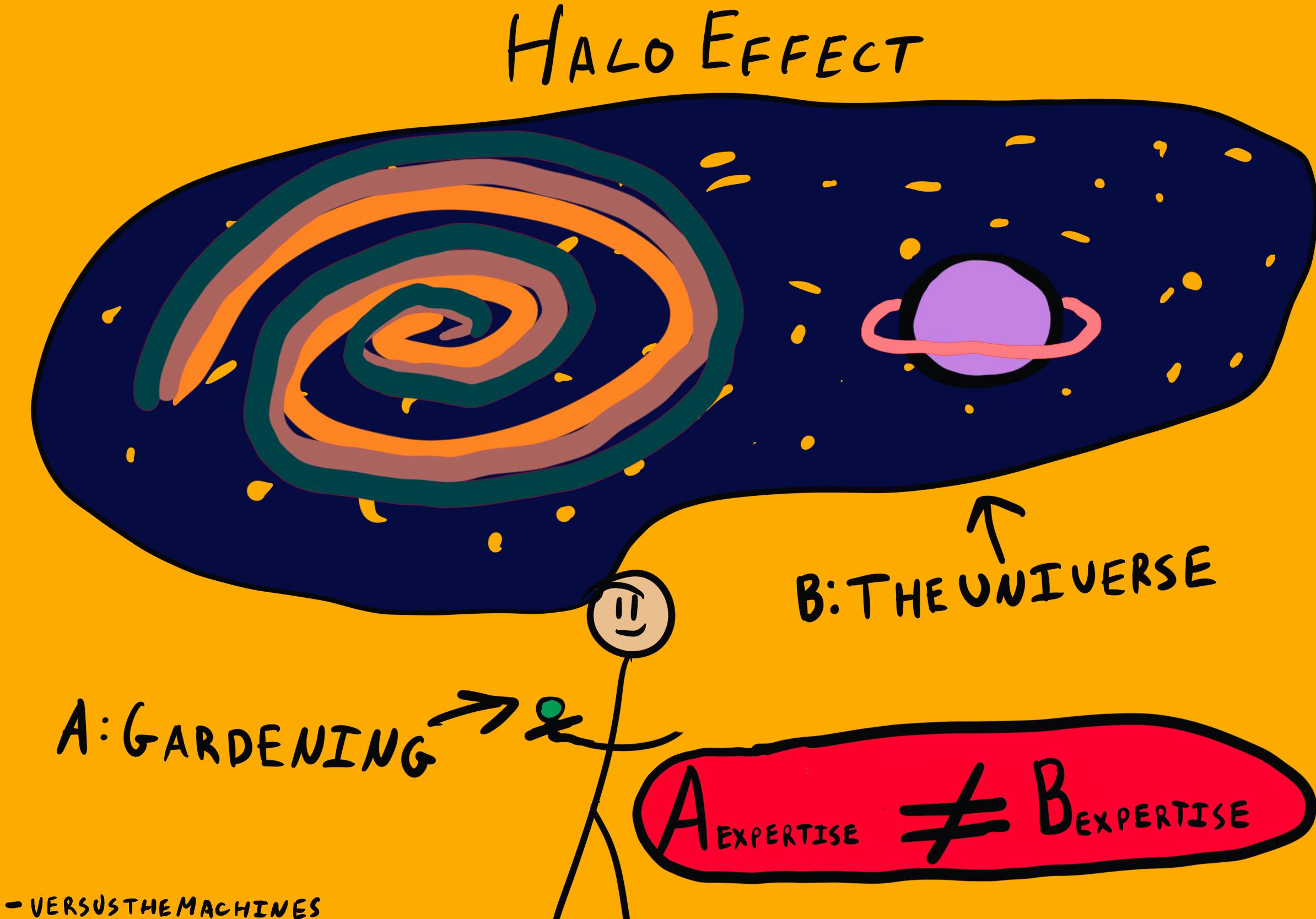 Image Modified
Image Modified
Image via the Decision Lab
Overview:
Welcome to the world of the Halo Effect where one shiny attribute dazzles us and influences our overall judgment. Imagine falling head over heels for a product just because it has a sleek design, assuming it's top-notch in every way. But hold on tight, because this bias can make us miss important details and lead us astray.
Impact:
When it comes to collaboration, the Halo Effect can create illusions and hinder thorough evaluations. When we're mesmerized by one impressive quality of a person, product, or organization, we tend to overlook other essential aspects. This can result in skewed judgments, favoritism, and missed opportunities for growth. It's like seeing only the dazzling exterior while ignoring what truly matters on the inside.
Prevention:
To prevent the Halo Effect from clouding our judgments, we need to put on our critical thinking capes! Instead of being swayed by one standout characteristic, let's take a step back and evaluate things holistically. Look beyond the shiny surface and delve into the depths of different aspects and attributes. Ask questions, gather information, and consider multiple perspectives. By embracing a comprehensive evaluation approach, we can unravel the truth beneath the halo and make more informed decisions.
7. Sunk Cost Fallacy:When We Cling to Past Investments
 Image Modified
Image Modified
Image via the Decision Lab
Overview:
Let's talk about the Sunk Cost Fallacy, a tricky bias that can keep us tied to the past. Picture this: you've poured your whole treasure chest of resources into a project. But alas, it's not sailing smoothly. Yet, you find yourself clinging to it, unwilling to abandon ship. That's the Sunk Cost Fallacy in action! It's when we let past investments cloud our judgment and keep us stuck in uncharted waters.
Impact:
The Sunk Cost Fallacy can shackle us to failing projects or ideas. We become so attached to what we've already invested—time, money, and effort—that we can't bear to let go, even when it's clear they're dragging us down. This reluctance to cut our losses leads to wasted resources, missed opportunities for innovation, and a ship stuck in the doldrums. But fear not, there's a map to navigate past this treacherous fallacy!
Prevention:
To prevent the Sunk Cost Fallacy from steering us astray, we need to summon our courage and embrace a rational mindset. It's time to evaluate projects and ideas based on their current merits, not the past investments. Ask yourselves, "Is this still the right course? Can we chart a better path forward?" Don't let the fear of abandoning sunk costs weigh you down. Instead, focus on the potential for innovation, growth, and undiscovered treasures. Remember, cutting losses can free up resources for new and exciting ventures!
Conclusion
From the mighty IKEA effect to sunk cost fallacy, we've uncovered some of the secrets that shape our collaborative endeavors. But we hold the key to unlock the full potential of our teamwork! By embracing strategies like fostering a culture of constructive critique, bridging communication gaps, taming self-consciousness, balancing power dynamics, and charting realistic plans, we become masters of collaboration. Though much can be accomplished simply by being aware of our own biases and recognizing when they're at play.
Include Page Byline-CB Byline-CB
 ISG Playbook
ISG Playbook APIs
APIs